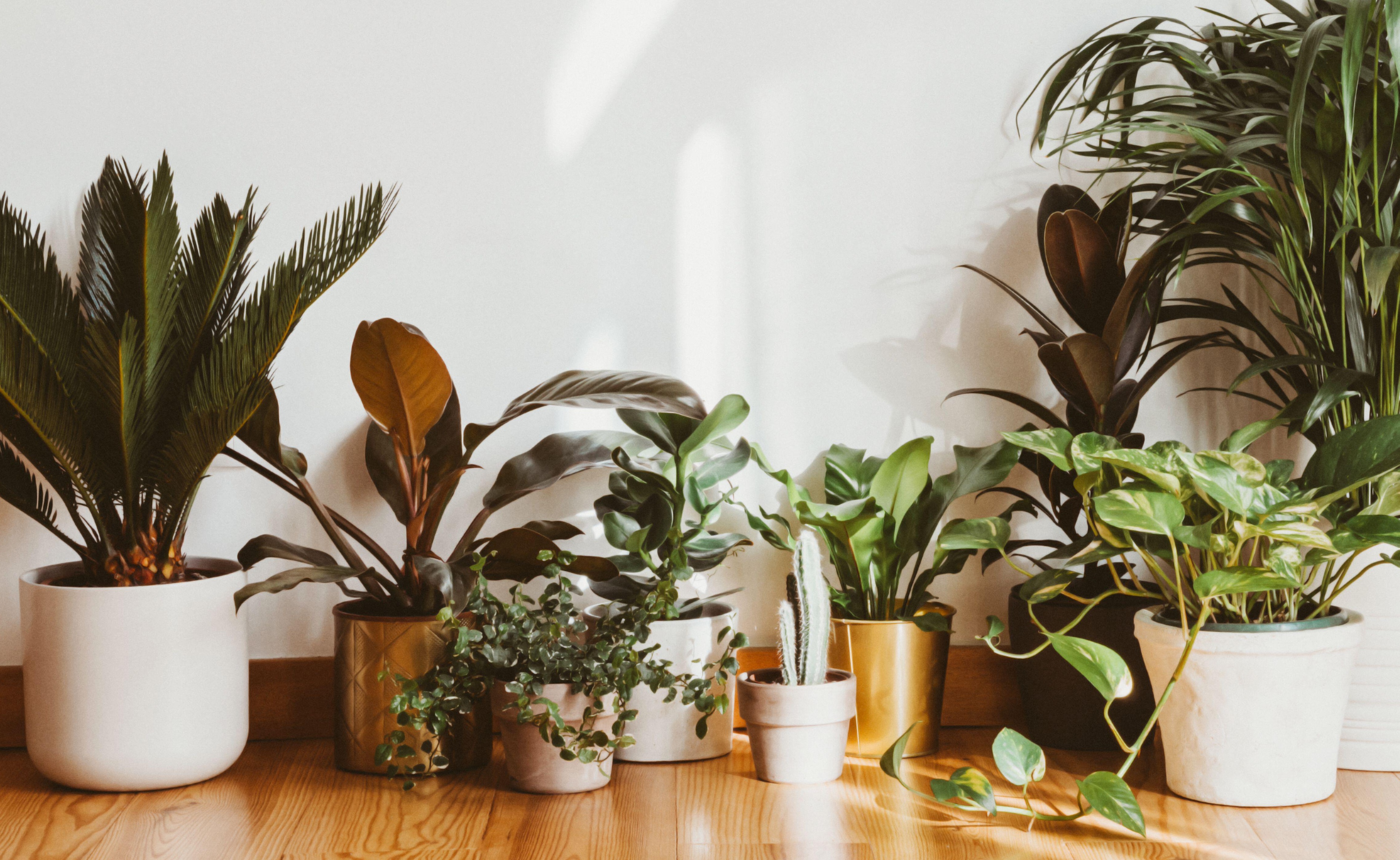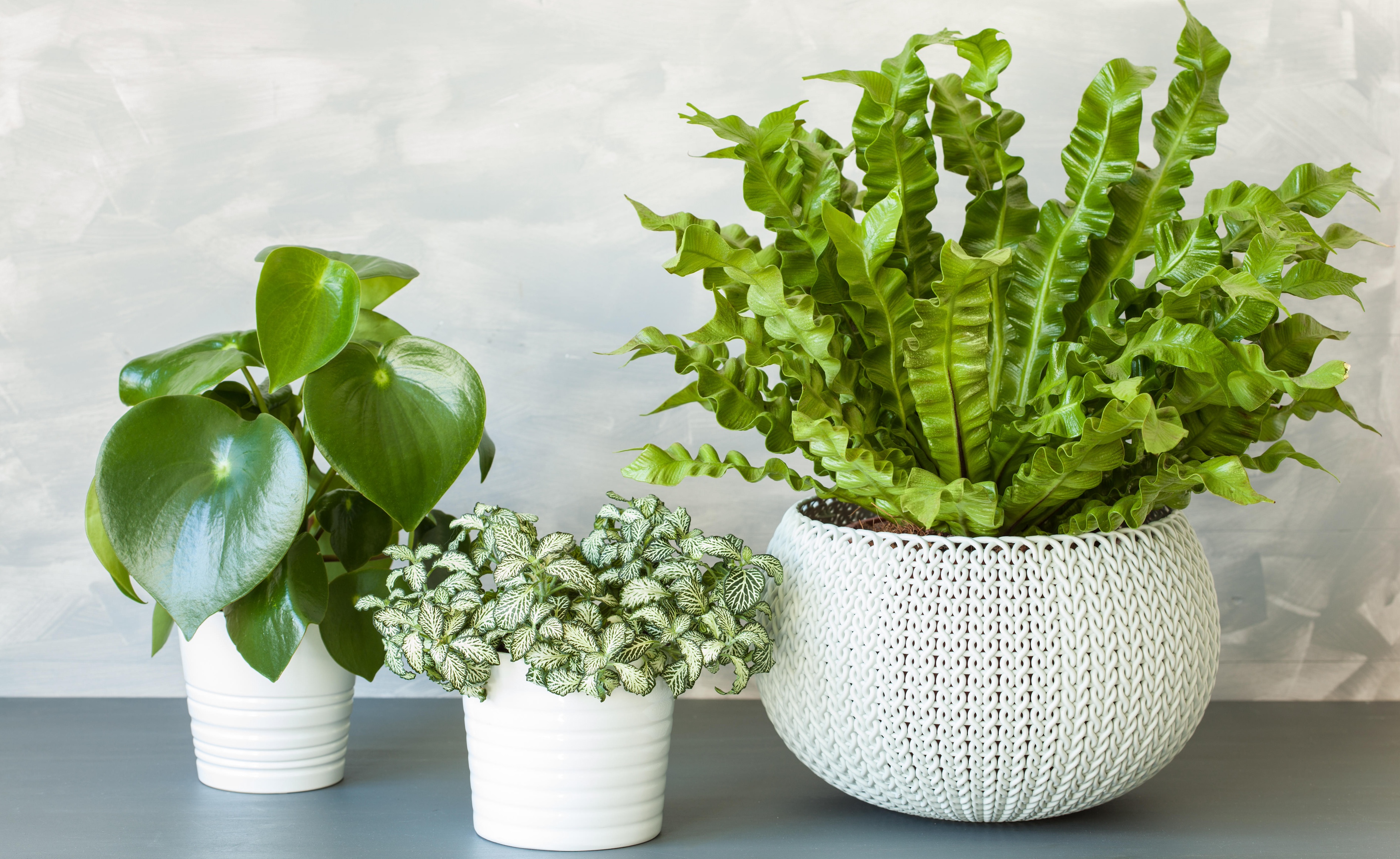5 Things You Need to Know to Avoid Overwatering Your Houseplants
Too much water can damage your beloved plants, so here's what you need to do to stop that from happening

How good are you at watering your houseplants? Do you do it on a weekly schedule? Or are you pleased if you even remember to do it all? Either way, these tips to avoid overwatering houseplants are an essential read.
Whether you're watering houseplants regularly, or haphazardly, it is all too easy to overwater them. It's where many of us go wrong, when tending to an indoor garden. One minute a plant is flourishing, the next, it's lacklustre. This could be due to any number of reasons, but the first to consider is your watering technique.
"Inconsistent watering can play a huge part in the health of the plant," says Lisa Eldred-Steinkopf, author, Houseplants for Beginners. "Letting your plant dry out too much and then drowning it is not beneficial. Keeping it consistently moist is a better practice."
Tips to avoid overwatering houseplants
How often you water your houseplants and how much water you use matters. Overwatering can lead to damage, root rotting and even yellowing leaves.
Here are 5 tips from plant experts on how you can avoid overwatering your plants.
1. Don't Water on a Weekly Schedule

Having a weekly watering schedule for your indoor garden may seem like a good idea, particularly if you're busy, or forgetful. Yet this is a surefire way to overwater your houseplants.
"A lot of folks like to water on a schedule—once a week, for example," says Justin Hancock, director, Costa Farms. "While it’s convenient and helps you remember, it can be detrimental to your plant if something’s going on and your plant is using less water."
The Livingetc newsletters are your inside source for what’s shaping interiors now - and what’s next. Discover trend forecasts, smart style ideas, and curated shopping inspiration that brings design to life. Subscribe today and stay ahead of the curve.
Justin continues: "For example, in the shorter days of autumn and winter, plants get less light and typically grow more slowly, often using less water than they did in spring and summer."
2. Check the Soil Before Watering

Checking your plants weekly is a far better idea than watering them weekly on auto pilot. This involves checking the soil to see if it's dry and needs water, or if there is enough moisture to sustain the plant for longer.
"It sounds basic, but actually checking the soil is easily overlooked," says Justin. "Check the soil with your finger or a moisture meter (like this soil moisture meter from Amazon) before watering your houseplant.
"If you detect the soil is moist, that gives you a sign not to add water. If it’s dry, water it. If it's easier, you can also pick up your plant and check the weight— a dry plant is a lot lighter than a wet plant. This is due to the amount of moisture the potting mix can hold." Over time, Justin says "you should be able to develop a good sense of how light your plant should feel when it’s time to water it."
3. Choose Terracotta Pots

Different plant pot materials have different properties, which will have a subtle effect on the plants growing inside them. If you have a tendency to overwater your houseplants, the material of the planter can help mitigate the effects. Using a clay pot sealer on these planters will also help your soil from drying out. Afterall, a good balance is always key.
Soil will stay wetter in plastic pots, for example, as it's not breathable and so the soil retains water for longer. "If you’re growing your plant in a plastic or ceramic pot, moving it to a terracotta container may help it dry out a little more quickly because terracotta is porous," explains Justin.
Another pertinent point with terracotta plant pots, is that most have drainage holes, which brings us onto the next tip.

Price: $1.54
Size: 4"
This medium terracotta pot from Walmart can be used as a decorative piece, as well as a home for your beloved houseplant. You can design this pot as you please as its smooth porous surface is the perfect blank canvas to paint on.
4. Allow plants to drain

Overwatering is one of the main causes of why your houseplant may smell bad and tip on fixing it — would be to ensure your plants are potted in planters with good drainage. After a plant has been thoroughly watered, it needs to drain. Most plants do not like to sit in soggy soil, as their roots can rot. Indoor plant drainage is important for this reason, and helps foliage stay healthy. So whatever styles or materials your prefer, ensure your plant pots have drainage holes.
"If you find overwatering is a problem and your plant is in a pot without drainage holes, changing to a container that does have drainage will allow excess water to escape so it’s not saturating your plant," says Justin.
"Every container used for growing plants needs a drainage hole," says Lisa Eldred Steinkopf. "If the pot is valuable and drilling a hole is impossible, the container should be used as a cachepot. For less valuable pots without a drainage hole, a masonry or diamond-tipped drill bit can be used to drill a hole in almost any material."
5. Ensure Your Plant Get Enough Light

If your plant is in a sunny, or bright, spot it will use more water than if it's in a low light location. An east or west window is good for a lot of plants, as they receive plenty of light but are not in direct sun for too long (which can scorch their leaves). Make sure you establish which houseplants are for direct sunlight and which plants need low light.
"You can easily eliminate the chances of overwatering, by providing your plants with the light they require," says Paris Lalicata, plant expert, The Sill. "Plants require both light and water to undergo photosynthesis. A lack of sunlight can lead to your plant can be overwatered. This is because the water remains stagnant in the soil, since the plant isn’t getting enough light to use that moisture."
FAQs
How do you water indoor plants without overwatering?

Firstly, don't be afraid to give your houseplants a good soak. Gingerly giving them water is not the way to avoid overwatering plants.
"To avoid overwatering, you must first understand what overwatering is," says Kamili Bell Hill, @plantblerd and author, happy Plants Happy You. "It is the frequency of watering, not the volume of water, that leads to overwatering."
Kamili continues: "When you are watering your plant, you want to fully rehydrate the soil. To do this, water the plant until the excess comes through the drainage holes. Do not water the plant again until it has had time to use up the moisture. In other words, for most houseplants, let the soil dry before watering again."
Jacky Parker is a freelance lifestyle journalist and writer, producing a wide range of features for magazines and digital platforms. She has written for Livingetc and its sister titles, Homes & Gardens and Country Homes & Interiors for more than 15 years, both as a freelance contributor and as Acting Digital Editor and Acting Style Content Editor, regularly reporting on the latest interiors, gardens and wellness inspiration, speaking to experts in their respective fields, and discovering the best tips.
Jacky has also written for other publications, including Sunday Times Style, The Telegraph, Architectural Digest, House Beautiful, ELLE Decoration, Red, Grand Designs and more.

